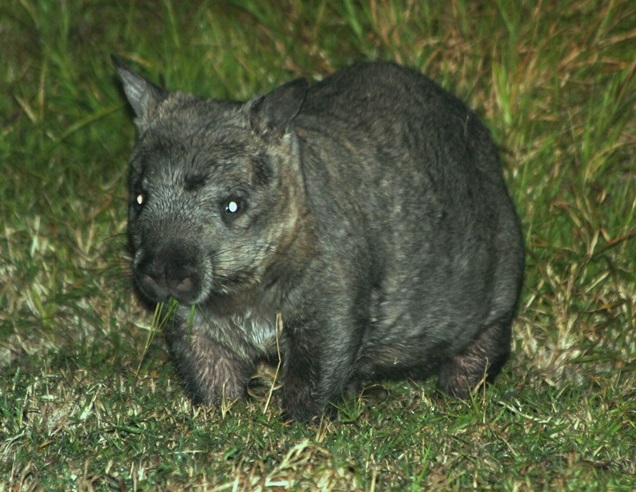Scientific name: Lasiorhinus krefftii

Description
The northern hairy-nosed wombat is the largest of the three wombat species. Compared with the two other species of wombat, northern hairy-nosed wombats have longer, more pointed ears and a broader muzzle fringed with fine whiskers. They generally have soft grey fur and dark patches around the eyes. Adults can weigh up to 40 kg, though on average they weigh around 32 kg and can reach over one metre in length.
Distribution
Northern hairy-nosed wombats previously inhabited woodland in semi-arid zones in parts of Victoria, NSW and Queensland. Now only two small populations exist in Queensland – one at Epping Forest National Park and the other at Richard Underwood Nature Refuge (RUNR) near St. George in southern Queensland. Current numbers suggest around 350 individuals remain. The Queensland State Government announced a third translocation site at Powrunna State Forest in 2023.
Diet
The diet of northern hairy-nosed wombats predominately consists of native grasses; however it now includes the introduced buffel grass which is present in its habitat. Northern hairy-nosed wombats have a very low metabolic rate compared with other marsupials, thus do not need to feed every day.
General biology facts
Northern hairy-nosed wombats are generally solitary animals. Burrows are occupied by a single wombat 70% of the time. Burrow sharing may occur in the larger, multi-entrance burrows and usually involves females rather than a male and female. Young are born in the wet season (November to April), and females only give birth to one pouch young at a time. Young stay in the pouch for 8 – 9 months, which is then followed by a 3 – 6 month period when the young remain in the burrow whilst the mother goes out to feed. Weaning occurs at 12 months.
Conservation status
Northern hairy-nosed wombats are listed as Critically Endangered under the IUCN red list, because of their very small range (less than 100 km2), all individuals being in the one location, and the declining quality of its habitat due to invasive buffel grass.
Mange
There have been no incidences of mange reported in northern hairy-nosed wombats.